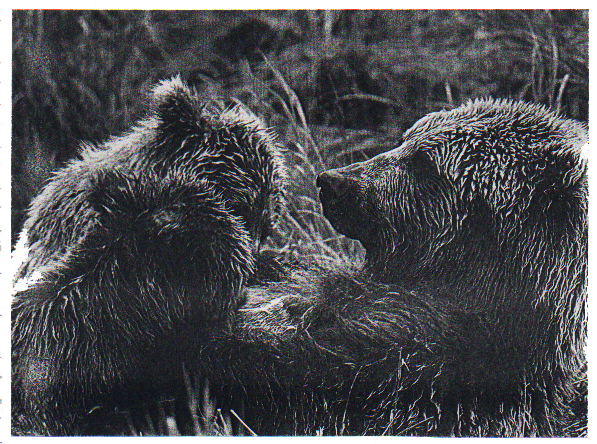 This collection of student work is from Frank Keim's classes. He wants to share these works for others to use as an example of culturally-based curriculum and documentation. These documents have been OCR-scanned and are available for educational use only.
This collection of student work is from Frank Keim's classes. He wants to share these works for others to use as an example of culturally-based curriculum and documentation. These documents have been OCR-scanned and are available for educational use only.Special | A | B | C | D | E | F | G | H | I | J | K | L | M | N | O
P | Q | R | S | T | U | V | W | X | Y | Z | ALL
Higuma by Barbara Andrew:Higuma
Japanese Brown Bear Japan is a crowded country with a population of 122 million people. With Japan's population there is enough wilderness to support nearly 3,000 Brown bears and an unknown number of Asian black bears. Brown bears are found only in Japan's northernmost island, Hokkaido. This island has a little more than 30,000 square miles and has nearly four times the Brown bear population of the entire continental United States! The land began being cleared about 150 years ago when agriculture and industry were introduced. Aboriginal Ainu had lived there by hunting bears and deer, catching salmon, and gathering plants for more than 1,000 years. The Ainu did not have any guns to kili these big animals. They used only bamboo arrows poisoned with a preparation made from the roots of a small purple-flowered plant called Aconitum yesoense. Hunters tested the poison for these bamboo arrows by putting it on the web between their fingers. If the poison was strong enough they would feel a burning sensation. After the bear was hit it would only run about 50 to 100 yards before falling. Each Ainu village would give thanks by bringing the bear to the mountain god after they had a four day -long ceremony or winter festival. Before the festival though they'd capture a Brown bear cub and raise it for two years. As it grew the women would take turns nursing the cub from their breast. About 20 years ago the Japanese government no longer let the ceremonies go on. Only a mock festival is held for tourists to prevent the old ways from being lost. Japanese consider the Brown bears to be dangerous pests for eating their livestock and sometimes killing mushroom pickers in the mountains. In 1915, after the killing of eight people and a baby, Yen awards were given out for killing the bears. Awards up to 20,000 Yen are still given out for nuisance bears in some communities. Their future does not look good because of the loss of their natural forest habitat. It is being cut down for both farm land and for forest products. Bears can't even go fishing now because the rivers the salmon live near are under human control and they are closed to the bears. Noako Maeda, the curator of the Noboribetsu Bear Park, in the city of Noboribetsu, is deeply interested in the bears of Hokkaido. She said," the bear's young cubs suckle very gently, more so than her own children." She hopes that the bears raised in the park will soon be released to the wild. By: Barbara Andrew
| |
|




